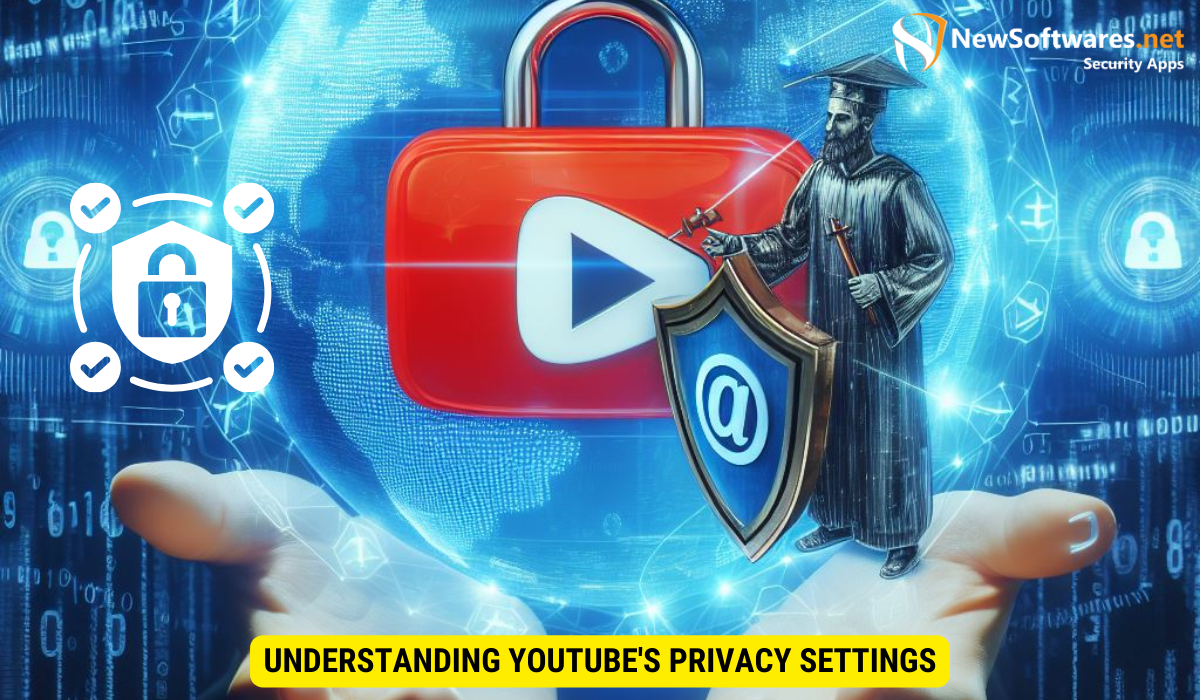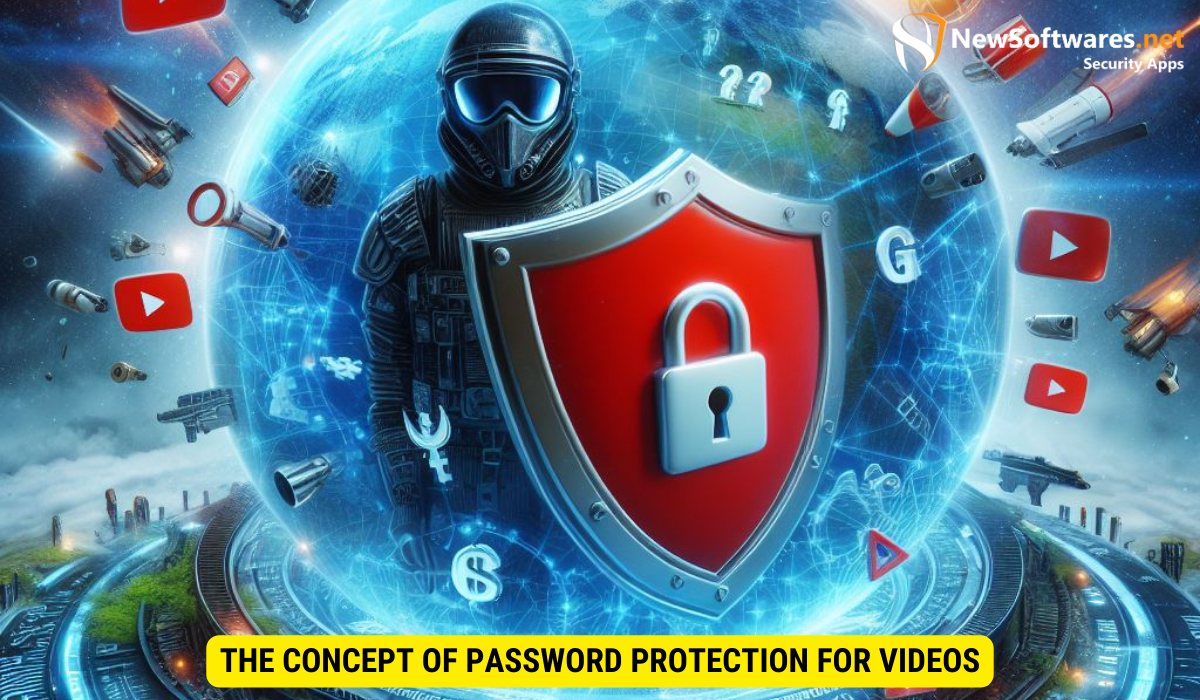No, currently YouTube does not offer native password protection for videos. However, you can utilize alternative platforms like Vimeo or Wistia, which provide password protection features.
In today’s digital age, maintaining control over your online content is of utmost importance. With platforms like YouTube being a popular choice for content creators, it is essential to understand how to protect your videos from unauthorized access. One question that often arises is whether or not you can password protect your YouTube videos. Together, we will delve into the intricacies of YouTube’s privacy settings, explore the concept of password protection, and discuss alternative methods to safeguard your valuable content.
Understanding YouTube’s Privacy Settings

Before diving into the specifics of password protection, let’s take a closer look at YouTube’s privacy settings. These settings determine who can view your videos on the platform. YouTube offers three primary privacy options: public, unlisted, and private.
When it comes to sharing your videos on YouTube, understanding the difference between public, unlisted, and private videos is crucial. Public videos are like the shining stars of YouTube, visible to anyone who searches for or stumbles upon them on the platform. They are the life of the YouTube party, attracting views, comments, and engagement from a wide audience.
On the other hand, unlisted videos are like hidden gems. They can only be accessed by those who have the direct link to the video. It’s like having a secret club where only the invited members can enjoy the content. Unlisted videos are perfect for sharing with a select group of people, such as friends, family, or colleagues. It allows you to maintain a level of exclusivity while still sharing your videos with those who matter most.
Now, if you’re looking for the utmost privacy and control over your videos, private videos are the way to go. These videos are the most restricted, as they are only viewable by individuals you explicitly select. It’s like having a VIP section in your YouTube channel, where only those with a golden ticket can enter. Private videos are ideal for sensitive or confidential content that you want to share with a specific group or keep entirely to yourself.
How to Change Your Video’s Privacy Settings
Changing the privacy settings of your YouTube videos is a simple process. After uploading a video, you can access the privacy options when you click on the “Edit Video” button. From there, you can choose whether you would like your video to be public, unlisted, or private. It’s essential to consider your content and intended audience when selecting the appropriate privacy level.
Remember, YouTube’s privacy settings are there to empower you as a content creator. They give you the flexibility to decide who can access your videos and ensure that your content reaches the right audience. So, whether you want to share your videos with the world, create an exclusive experience for a select few, or keep your content under lock and key, YouTube’s privacy settings have got you covered.
The Concept of Password Protection for Videos

Now that we have a better understanding of YouTube’s privacy settings, let’s explore the concept of password protection for videos. Password protection entails adding an extra layer of security to your videos by requiring viewers to enter a password to access the content.
What Does Password Protection Mean?
Password protection ensures that only individuals with the correct password can view your videos. This can be particularly useful when sharing sensitive or confidential content with a select group of people. By implementing password protection, you have more control over who can access your videos and can safeguard them from unauthorized viewers.
Platforms That Allow Password Protection for Videos
While YouTube does not currently offer built-in password protection for videos, there are alternative platforms that do. These platforms cater specifically to individuals or businesses looking for enhanced video security. Examples include Vimeo’s “Privacy” feature and Wistia’s “Advanced Privacy Options.” These platforms allow you to set passwords for your videos and control their distribution more effectively.
Let’s delve deeper into Vimeo’s “Privacy” feature. With this feature, you can not only set a password for your videos but also customize the privacy settings to suit your needs. For instance, you can choose to make your videos accessible to anyone with the password, restrict access to specific email addresses, or even limit viewing to certain geographical locations. This level of flexibility ensures that your videos remain secure and accessible only to the intended audience.
On the other hand, Wistia’s “Advanced Privacy Options” take video security to the next level. In addition to password protection, Wistia allows you to add domain restrictions, meaning you can specify which websites can embed and play your videos. This feature prevents unauthorized websites from embedding your videos and ensures that they are viewed only on approved platforms. Furthermore, Wistia offers the ability to set expiration dates for your videos, so they automatically become inaccessible after a certain period of time. This is particularly useful when sharing time-sensitive content that should not be available indefinitely.
By utilizing these alternative platforms, you can take advantage of their robust password protection features to safeguard your videos. Whether you are a content creator, a business owner, or an educator, having the ability to control who can access your videos is crucial in maintaining privacy and security.
Can You Password Protect YouTube Videos?
Although YouTube does not provide native password protection, it’s crucial to understand their stance on the matter and explore alternative ways to secure your YouTube content.
YouTube’s Stance on Password Protection
As of now, YouTube does not support password protection for videos on their platform. However, they do offer robust privacy settings, including the option to make videos unlisted or private. These settings provide a level of protection, but it’s essential to keep in mind that they are not foolproof.
Alternative Ways to Secure Your YouTube Content
If you’re concerned about additional security measures, you can adopt practices to protect your YouTube content further. One approach is to share private YouTube videos safely.
Sharing Private YouTube Videos Safely
When sharing private YouTube videos, it’s important to follow best practices to ensure the content remains secure.
Best Practices for Sharing Private Videos
Consider the following best practices when sharing private YouTube videos:
- Share the video link selectively with trusted individuals or groups.
- Use strong and unique passwords for your YouTube account to prevent unauthorized access.
- Regularly review and update your privacy settings to maintain control over who can view your videos.
- Keep track of who has access to your private videos and remove access for any individuals who no longer require it.
- Consider using other platforms or methods to share highly sensitive content.
Risks and Precautions When Sharing Private Content
While sharing private YouTube videos is relatively secure, it’s important to be aware of potential risks and take necessary precautions. Remember that no method is entirely foolproof, and there is always a small chance of unauthorized access if proper precautions are not taken.
Other Methods to Protect Your YouTube Content
In addition to privacy settings and secure sharing practices, there are other methods you can employ to protect your YouTube content.
Using Watermarks for Video Protection
Consider adding watermarks to your YouTube videos to discourage unauthorized usage or sharing. Watermarks, such as your logo or channel name, can help establish ownership and deter others from misusing your content without permission.
Enabling Copyright Strikes and Content ID Claims
YouTube provides tools like copyright strikes and Content ID claims to protect against unauthorized use of your content. These tools enable you to take action against individuals or entities who may be infringing upon your intellectual property rights.
Key Takeaways
- YouTube offers privacy settings that determine who can view your videos: public, unlisted, and private.
- Although YouTube does not natively support password protection, alternative platforms like Vimeo and Wistia provide this feature.
- If you choose to share private YouTube videos, follow best practices to ensure security.
- Consider using additional methods to protect your YouTube content, such as adding watermarks or enabling copyright protection tools.
- Remember that no method is entirely foolproof, and it is essential to stay vigilant in protecting your online content.
FAQs
1. Can I password protect my YouTube videos?
No, YouTube does not currently offer native password protection for videos. However, there are alternative platforms that allow password protection.
2. How can I ensure the security of my private YouTube videos?
To ensure the security of your private YouTube videos, follow best practices such as sharing the video link selectively, using strong and unique passwords, and regularly reviewing your privacy settings.
3. Are there any other methods to protect my YouTube content?
Yes, you can employ additional methods to protect your YouTube content, such as using watermarks and enabling copyright strikes and Content ID claims.
4. Are YouTube’s privacy settings sufficient to protect my videos?
YouTube’s privacy settings provide a level of protection, but they are not foolproof. It’s essential to be aware of their limitations and consider additional security measures if necessary.
5. How can I take action against individuals using my YouTube content without permission?
You can take action by utilizing YouTube’s copyright strikes and Content ID claims features, which enable you to enforce your intellectual property rights.
Conclusion
In conclusion, while YouTube does not currently support password protection for videos, there are alternative measures you can take to protect your valuable content. Understanding YouTube’s privacy settings, exploring the concept of password protection, and considering alternative platforms are all crucial steps in safeguarding your videos. By following best practices for sharing private YouTube videos and utilizing additional protection methods like watermarks and copyright claims, you can enhance the security of your YouTube content and effectively protect it from unauthorized access.
